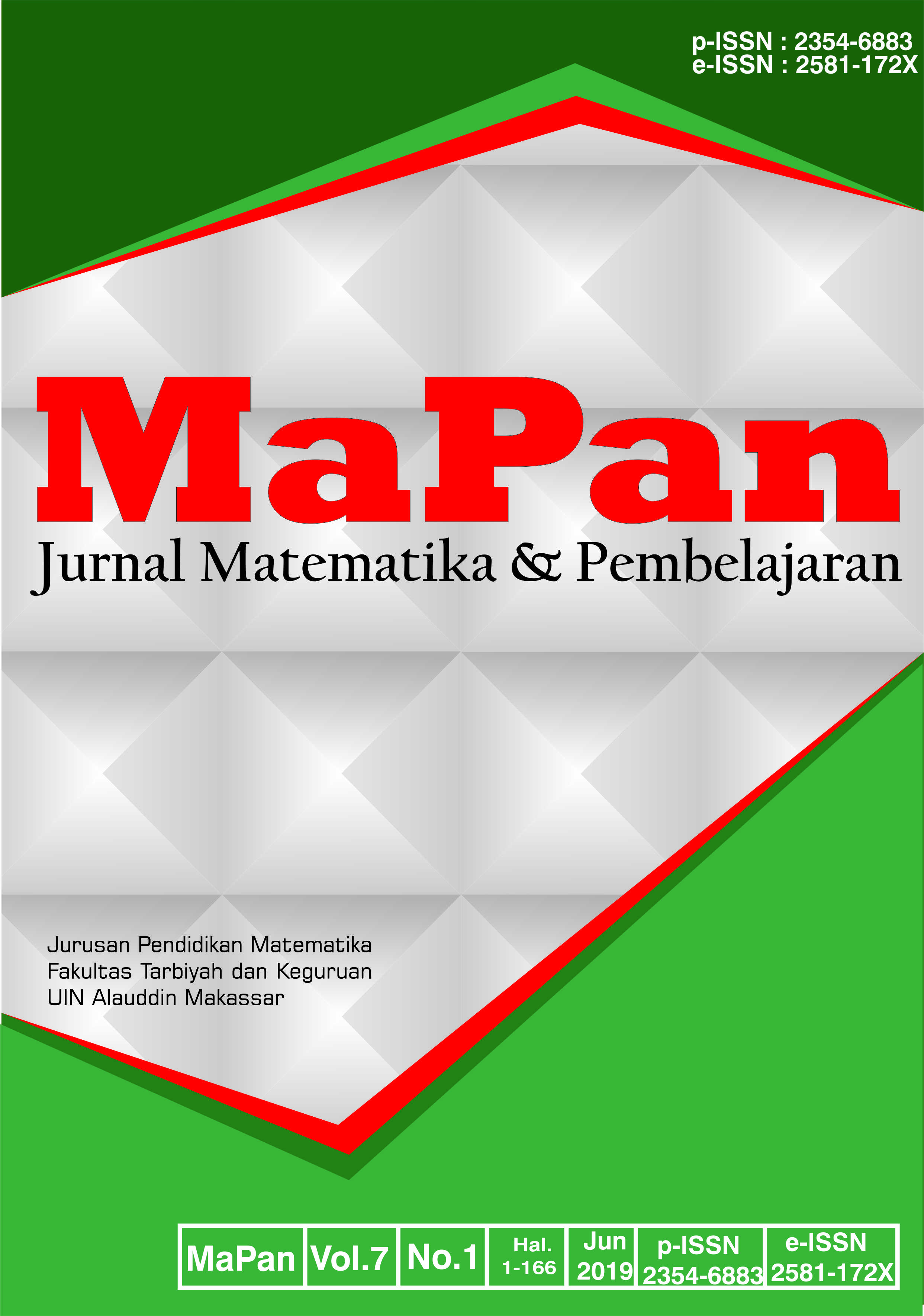PENGARUH SELF-REGULATED LEARNING TERHADAP KEMAMPUAN REPRESENTASI MATEMATIKA MAHASISWA DALAM PEMBELAJARAN BERBASIS MASALAH
Abstract
Abstrak:
Penelitian ini bertujuan untuk membandingkan dua kelompok dengan perlakuan yang berbeda. Penelitian ini merupakan penelitian eksperimental dengan desain yang digunakan adalah desain perbandingan kelompok utuh. Penelitian ini dibagi menjadi dua kelompok, kelompok pertama diberikan pembelajaran berbasis masalah sebagai kelompok eksperimen dan kelompok kedua sebagai kelompok kontrol menggunakan pembelajaran ekspositori. Populasi dalam penelitian ini sama dengan sampel, yaitu sebanyak 30 mahasiswa tadris matematika yang mengambil mata kuliah geometri analitik. Data dianalisis menggunakan uji Mann Whitney dan Kendall. Hasil penelitian menunjukkan bahwa secara umum kemampuan representasi matematis dari kedua kelompok tidak berbeda secara signifikan, tetapi pada kelompok eksperimen memiliki self-regulated legulated lebih baik daripada kelompok kontrol.
Abstract:
This research was an experimental study with the design used was the intact-group comparison design. The research class in this design was only one but it was divided into two groups, half of the group was given treatment of problem-based as experimental group and another group using expository learning as control group. The population in this study was the same as the sample, 30 students who took analytical geometry course. Data analysis used Mann Whitney test and Kendall. The results showed that in general the ability of mathematical representation of the two groups did not different significantly, but in the self-regulated legulated score the experimental group was better than the control group.
Downloads
References
Carparo, R. M., & Capraro, M. . (2006). Underlying structures of mathematical representation: A theoretical perspective: Paper presented at the annual meeting of the American Educational Research Association. San Francisco, CA.
Darr, C., & Fisher, J. (2004). Self-Regulated Learning in Mathematics Class. Self-Regulated Learning. Conference Paper, 44–49.
Keller, B. A., & Hirsch, C. R. (1998). Student Preferences for Representations of Functions. International Journal of Mathematics Education in Science and Technology, 29(1), 1–17. Retrieved from https://www.tandfonline.com/doi/abs/10.1080/0020739980290101
Levin, B. (2001). Energizing Teacher Education and Professional Development with Problem-Based Learning. Virginia: Association for Supervision and Curriculum Development.
Marchis, I. (2011). How Mathematics Teachers Develop Their Pupils’ Self-Regulated Learning Skills. Acta Didactica Napocensia, 4(2), 2–3. Retrieved from Acta Didactica Napocensia
Nakahara, T. (2008). Cultivating Mathematical Thinking Trough Representation. Retrieved from http://www.criced.tsukuba.ac.jp/math/apec /apec2008/index_en.php.
Perry, N., VandeKamp, K., Mercer, L., & Nordby, C. (2002). Investigating Teacher-Student Interactions That Foster Self-Regulated Learning. Educational Psychologist, 37(1), 5–15. Retrieved from https://psycnet.apa.org/record/2002-12378-001
Porzio, D. T. (1994). The Effects of Differing Technological Approaches to Calculus on Students’ Use And Understanding of Multiple Representations When Solving Problems. The Ohio State University.
Reedal, K., E. (2010). Jean Piaget’s Cognitive Development Theory in mathematics Education. Retrieved from http://ripon.edu/ macs/summation
Smith, L., Dockrell, J., & Tomlinson, P. (1997). Piaget, Vygotsky and beyond. London: Routledge.
Zimmerman, B., Bonner, S., & Kovach, R. (1996). Developing Self-Regulated Learners: Beyond Achievement to Self Efficacy. Washington: American Psychological Association.
Ziniel, S. (2008). Split-Half In: Encyclopedia of Survey Research Methods.
Copyright (c) 2019 Ifada Novikasari, Fauzi Fauzi

This work is licensed under a Creative Commons Attribution 4.0 International License.


